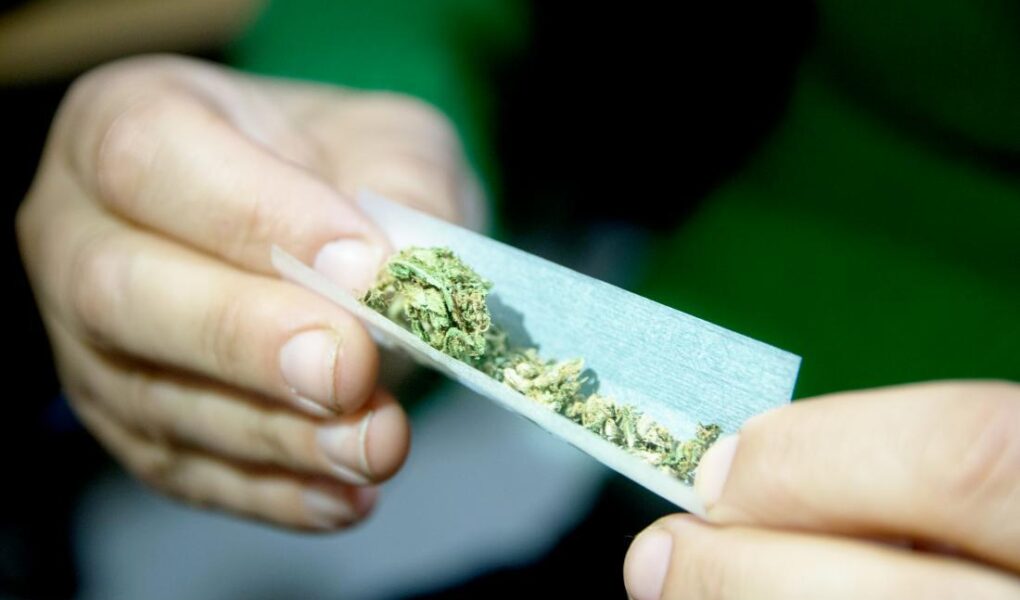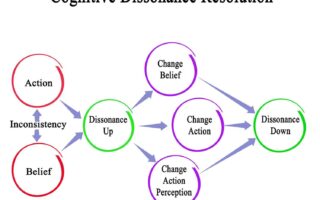The Green Enigma: Unraveling the Complex World of Cannabis Consumption
In the shadows of society’s evolving norms, the practice of smoking weed has stepped into the sunlight, sparking debates and curiosity alike. From its ancient roots in indigenous cultures to its modern resurgence in legalized markets, cannabis has carved a distinctive niche in the tapestry of human experience. The ritual of rolling, sparking, and inhaling this green herb evokes a mélange of perceptions—ranging from the countercultural rebel to the wellness advocate. As we embark on this exploration, we’ll delve into the multifaceted layers of smoking weed—examining its historical significance, cultural implications, and the ongoing discourse surrounding its legality and health effects. Join us on this journey as we seek to demystify the complexities of cannabis consumption and understand its place in our contemporary world.
Table of Contents
- The Evolution of Cannabis Use in Society
- Understanding the Health Benefits and Risks of Cannabis Consumption
- Navigating Legalities and Regulations Surrounding Cannabis Use
- Enhancing Your Experience: Tips for Responsible Consumption of Cannabis
- Q&A
- In Summary
The Evolution of Cannabis Use in Society
The journey of cannabis use throughout history reflects profound shifts in societal attitudes and legal frameworks. Beginning as an essential crop for fiber and oil, cannabis transitioned into a substance that sparked intrigue and concern throughout various cultures. In ancient China, it served medicinal purposes, while in other parts of the world, it found its place in ceremonial rituals. As civilizations progressed, the relationship with cannabis became more complex, with its psychoactive properties leading to both fascination and demonization during different historical periods. The stigmatization during the early 20th century, particularly in the United States, marked a significant turning point, driving the narrative that associated cannabis with deviance and crime.
In contemporary society, a renaissance of cannabis use is being cultivated, largely influenced by advocacy for its medicinal benefits and the decriminalization movement gaining traction globally. Today, cannabis is being embraced for a range of positive attributes, including:
- Medical Use: Recognized for alleviating conditions like chronic pain, anxiety, and epilepsy.
- Cultural Acceptance: Prominent in art, music, and social gatherings, breaking down long-standing stigmas.
- Commercialization: The rise of legal markets has transformed it into a viable economic resource.
This evolution not only suggests a deeper understanding of cannabis but also points towards a future where it holds a multi-dimensional role in health, culture, and economy.
Understanding the Health Benefits and Risks of Cannabis Consumption
Cannabis consumption has gained significant attention in recent years, leading to a better understanding of its potential health benefits and associated risks. One of the primary benefits that users often seek is relief from chronic pain, which studies suggest may be due to cannabinoids interacting with the body’s endocannabinoid system. Additional positive outcomes may include:
- Reduction of anxiety and depression: Some users report decreased symptoms.
- Cancer treatment support: Certain strains may alleviate chemotherapy-induced nausea.
- Improved sleep quality: Indica strains are often favored for their sedative effects.
Nevertheless, it is crucial to acknowledge the potential risks involved in smoking weed. Frequent use can lead to addiction, with some users developing a dependency on cannabis. Additionally, smoking may adversely affect respiratory health, particularly in individuals with pre-existing conditions. Other concerns include:
- Impaired cognitive function: Short-term memory and focus may diminish temporarily.
- Exacerbation of mental health issues: Pre-existing conditions like schizophrenia may worsen.
- Legal repercussions: Depending on the jurisdiction, usage can lead to legal consequences.
| Benefits | Risks |
|---|---|
| Pain relief | Addiction potential |
| Reduced anxiety | Cognitive impairment |
| Support during treatments | Respiratory issues |
Navigating Legalities and Regulations Surrounding Cannabis Use
Understanding the legal landscape surrounding cannabis use is crucial for any enthusiast. Laws can vary significantly not just between countries but also within regions and municipalities. It’s essential to stay informed about local regulations, such as age restrictions, possession limits, and the legality of various consumption methods. Engaging with community resources, such as legal aid organizations or local cannabis advocates, can provide clarity on nuanced issues. Below are some key points to consider:
- Age restrictions: Most jurisdictions set a minimum age for legal purchases and consumption.
- Possession limits: Understand the quantity that you can legally possess to avoid complications.
- Consumption locations: Familiarize yourself with where smoking is allowed, as public consumption is often restricted.
Moreover, it’s important to be aware of ongoing legislative changes. Cannabis laws are continually evolving, which means staying updated on proposed regulations or amendments is vital. For instance, some areas are exploring home cultivation laws that could affect consumers in the near future. To better illustrate the dynamic nature of cannabis regulations, consider the following table outlining a few key variables:
| Region | Legal Status | Possession Limit |
|---|---|---|
| California | Recreational & Medical | 1 ounce |
| Colorado | Recreational & Medical | 1 ounce |
| New York | Recreational & Medical | 3 ounces |
| Texas | Medical Only | 1 ounce (medical) |
This information underscores the importance of knowing and understanding your rights as a cannabis consumer. Engaging in responsible behavior and adhering to the legal framework can lead to a more enjoyable and worry-free experience.
Enhancing Your Experience: Tips for Responsible Consumption of Cannabis
When indulging in cannabis, it’s essential to prioritize a mindful approach to ensure a fulfilling experience. Know your source: Purchase from reputable dispensaries that provide lab-tested products, ensuring quality and safety. Moreover, start low and go slow—especially for novices. This method allows you to gauge your body’s reaction without overwhelming yourself. Consider exploring different strains and consumption methods to find what resonates best with you. Remember that mixing with other substances can impact the effects, so try to stick to one thing at a time for clarity.
Creating an enjoyable environment enhances your experience significantly. Set the mood with comfortable seating, soft lighting, and your favorite tunes. This can help relax your mind and amplify the effects of cannabis. Engage with friends who share a similar mindset; this can add layers to your experience as you share insights, stories, and laughter. keep a glass of water nearby to stay hydrated, and consider some healthy snacks. Here’s a quick reference table to help guide responsible usage:
| Consideration | Tip |
|---|---|
| Dosage | Start with a small amount. |
| Environment | Create a cozy, safe setting. |
| Hydration | Keep water on hand. |
| Strain Exploration | Experiment with various types. |
| Social Setting | Share the experience with like-minded friends. |
Q&A
Q&A: Unraveling the Mystique of Smoking Weed
Q1: What is smoking weed, and why do people do it?
A1: Smoking weed refers to the act of inhaling the smoke produced by burning the flowers or leaves of the cannabis plant, which contains the psychoactive compound known as THC (tetrahydrocannabinol). People smoke weed for various reasons, including relaxation, recreational enjoyment, and sometimes for medicinal purposes. The experience can induce feelings of euphoria, heightened sensory perception, and creativity, making it popular among diverse groups.
Q2: How does smoking weed affect the body and mind?
A2: When weed is smoked, THC quickly enters the bloodstream and interacts with cannabinoid receptors in the brain, leading to a range of psychological and physiological effects. Users might experience altered mood, increased appetite, and changes in perception. On the flip side, smoking cannabis can also cause short-term memory issues, anxiety, or paranoia in some individuals. The effects vary widely depending on the strain, dosage, and personal tolerance.
Q3: Is smoking weed safer than smoking tobacco?
A3: While both practices involve inhaling smoke, there are significant differences. Research suggests that cannabis contains fewer harmful chemicals than tobacco and is not strongly linked to lung cancer like cigarettes are. However, smoking anything can irritate the lungs and lead to respiratory issues over time. Additionally, the psychoactive effects of cannabis can impair judgment and coordination, which brings its own set of risks.
Q4: What are the legal implications of smoking weed?
A4: The legality of smoking weed varies dramatically around the world and even within countries. In some places, cannabis has been fully legalized for recreational and medicinal use, while in others, it remains strictly prohibited. It’s crucial for individuals to understand and comply with local laws regarding possession, usage, and distribution of cannabis to avoid legal repercussions.
Q5: How can one smoke weed responsibly?
A5: Responsible smoking involves knowing one’s limits and choosing quality over quantity. It’s wise for users to start with a low dose, especially if they are inexperienced. Additionally, one should never drive or operate heavy machinery after consumption, and it’s beneficial to be aware of one’s surroundings and the company you’re with while smoking. Hydration and a safe, comfortable space can enhance the experience while minimizing potential negative effects.
Q6: Are there alternatives to smoking weed?
A6: Absolutely! For those who prefer not to smoke, there are alternative consumption methods, such as vaping, edibles, tinctures, and oils. Each method varies in terms of onset time, duration of effects, and intensity, allowing users to choose one that best suits their preferences and lifestyle. Advancements in cannabis technology also mean that non-combustible options are becoming increasingly popular.
Q7: Can smoking weed lead to addiction?
A7: While many people use cannabis without developing dependence, some individuals may experience what is known as cannabis use disorder. This can manifest as cravings, increased tolerance, and withdrawal symptoms when not using cannabis. Experts estimate that about 9% of users may develop some form of dependence, with the risk increasing for those who start using at a younger age or who use it frequently. Awareness and moderation are key.
Q8: What’s the future of smoking weed?
A8: As societal attitudes shift and more regions legalize cannabis, the future of smoking weed appears to be growing, with increased research into its benefits and risks. Innovations in cultivation and consumption methods are also likely to emerge, creating a continually evolving landscape around cannabis use. Ultimately, as we deepen our understanding of the plant and its effects, informed conversations will help shape the narrative surrounding smoking weed for generations to come.
—
Whether for pleasure or medicinal use, the world of cannabis is rich with possibility and complexity. Knowledge fosters responsible enjoyment, paving the way for informed choices.
In Summary
As we draw the curtain on our exploration of cannabis, it’s clear that this multifaceted plant invites a diverse range of perspectives. From its historical roots to its contemporary use, weed is more than just a recreational pastime; it embodies a cultural, medicinal, and legal journey that continues to unfold. Whether you view it as a vessel for creativity, a tool for relaxation, or a complex subject of legal debate, cannabis presents opportunities for awareness and understanding unlike any other. As society continues to navigate its implications and possibilities, one thing remains certain: the conversation around smoking weed is far from over. So light up your curiosity, explore the nuances, and contribute to a dialogue that respects both the plant and the myriad experiences that accompany it. The world of cannabis is vast, and there’s always more to learn and discuss. Until next time, may your experiences be thought-provoking and your perspectives expansive.



